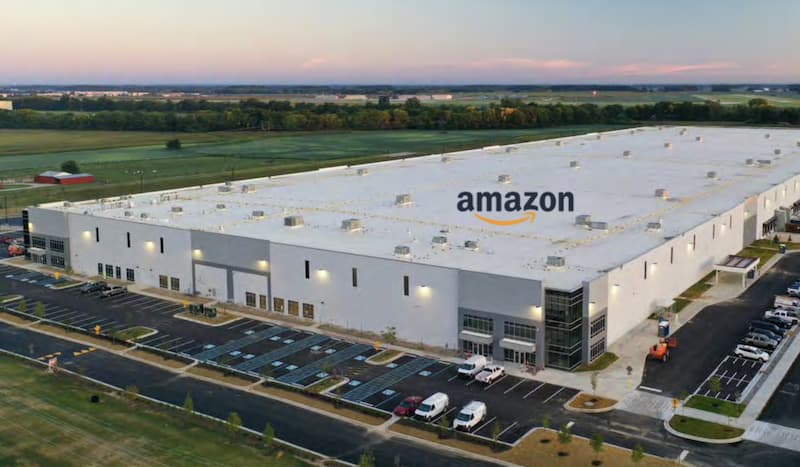Investment in Industrial Real Estate: 5 Reasons to Consider it
Industrial real estate has become one of the most profitable and popular investment types in the United States. Industrial real estate opportunities provide a wide range of excellent options that might be ideal for institutional portfolios, private investors, or family offices with varying risk appetites and tolerances. Industrial real estate provides an extensive variety of property types, such as warehouse, distribution, manufacturing, and flex space.
Although industrial assets might not have the aesthetics and curb appeal of other types of real estate, there has been a surge in demand for industrial investments over the last few years as the sector gradually transforms in order to accommodate many high-growth industries.
What is Industrial Real Estate?
Industrial properties include the following:
- Manufacturing facilities
- Distribution centers
- Research and development facilities
- Flex-space and multi-tenant properties
It is worth noting that the types of industrial properties in different regions or areas often vary based on the local infrastructure. For example, some areas are pretty heavy on manufacturing, and some towns and cities may have limited options for industrial investments.
There is no doubt that automation and technology have played a massive role in industrial property development over the last few years. Also, it has become a primary expense for industrial landlords whose tenants have resorted to automation and robotics for their business activities. This innovation has made industrial real estate a very lucrative and exciting investment category.
Many experts consider industrial real estate one of the strongest and most attractive asset classes as it’s usually relatively inexpensive to own and operate. It also typically provides a more stable cash flow than other real estate sectors, like retail and office.

Here are five reasons to consider investing in industrial real estate:
1. High Demand
Industrial properties usually stay vacant for considerably less time than other kinds of commercial real estate, such as office space. CBRE reveals that leasing demand for industrial property, such as distribution centers, has been mainly driven by transportation and warehousing, retail, and wholesale (including e-commerce), as well as processing and manufacturing. Also, as industrial real estate plays a huge part in infrastructure, it is usually in high demand in specific areas.
And demand for industrial properties stays high as almost every product we encounter or use has likely passed through an industrial property in one way or another. Hence, these properties are considered to be part of the logistical supply chain and thus indispensable. Due to the current popularity of e-commerce and the resultant need for larger-scale distribution and fulfillment centers, this industry has the potential to flourish in the future, resulting in the possibility of continued high-demand.
2. Less Maintenance
Owning a commercial property comes with its fair share of expenses and overhead, such as repairs, upgrades, and renovations. These expenses will likely be necessary throughout the entire duration of your ownership and tend to become both time-consuming and costly.
However, overall, the maintenance or upgrades required are usually much less than in most other sectors. For example, many industrial properties are usually big, open areas with high, exposed ceilings and poured concrete floors, and so there is no need for items like flooring, high-end fixtures, and sound-proofing.
3. Reasonable Vacancy Costs and Lower Vacancy Rates
One of the least attractive aspects of real estate investment is facilitating your property for the next tenant once the previous tenant moves out. This means that in the case of residential or retail tenants, landlords will likely have to pay the remaining heating bills, insurance taxes, and property taxes. And if the residential tenants have left the property in bad shape, revamping the property in order to attract new tenants can be expensive. However, with industrial real estate properties, such as distribution centers, these costs can be much lower.
Although office vacancies have surged as employers and companies prepare for a post-COVID-19 future of distributed work, the industrial real estate market is hotter than ever. This is due to a pandemic-fueled surge in e-commerce as well as increased consumer demand to receive more products at Amazon-like speeds. See Marcus and Millichap.
4. Can Be Easier to Liquidate
Due to currently high overall demand for industrial properties, these properties generally remain on the market for shorter periods of time than other real estate asset classes.
5. Higher Potential Yields
With typically fewer market fluctuations, longer leases, and less turnover, investors are likely to potentially benefit from a greater ROI. Although all investments have associated risks, industrial real estate is often considered more recession-resilient than other types of properties, and these properties tend to hold their value and sometimes possibly appreciate over time. As industrial properties can have higher rental rates, this can also lead to higher yields for investors.
Contact Perch Wealth today to discuss opportunities about investing in industrial properties.
General Disclosure
Not an offer to buy, nor a solicitation to sell securities. Information herein is provided for information purposes only and should not be relied upon to make an investment decision. All investing involves risk of loss of some, or all principal invested. Past performance is not indicative of future results. Speak to your finance and/or tax professional prior to investing.
Securities offered through Emerson Equity LLC Member: FINRA/SIPC. Only available in states where Emerson Equity LLC is registered. Emerson Equity LLC is not affiliated with any other entities identified in this communication.
1031 Risk Disclosure:
• There is no guarantee that any strategy will be successful or achieve investment objectives;
• Potential for property value loss – All real estate investments have the potential to lose value during the life of the investments;
• Change of tax status – The income stream and depreciation schedule for any investment property may affect the property owner’s income bracket and/or tax status. An unfavorable tax ruling may cancel deferral of capital gains and result in immediate tax liabilities;
• Potential for foreclosure – All financed real estate investments have potential for foreclosure;
• Illiquidity – Because 1031 exchanges are commonly offered through private placement offerings and are illiquid securities. There is no secondary market for these investments.
• Reduction or Elimination of Monthly Cash Flow Distributions – Like any investment in real estate, if a property unexpectedly loses tenants or sustains substantial damage, there is potential for suspension of cash flow distributions;
• Impact of fees/expenses – Costs associated with the transaction may impact investors’ returns and may outweigh the tax benefits.

